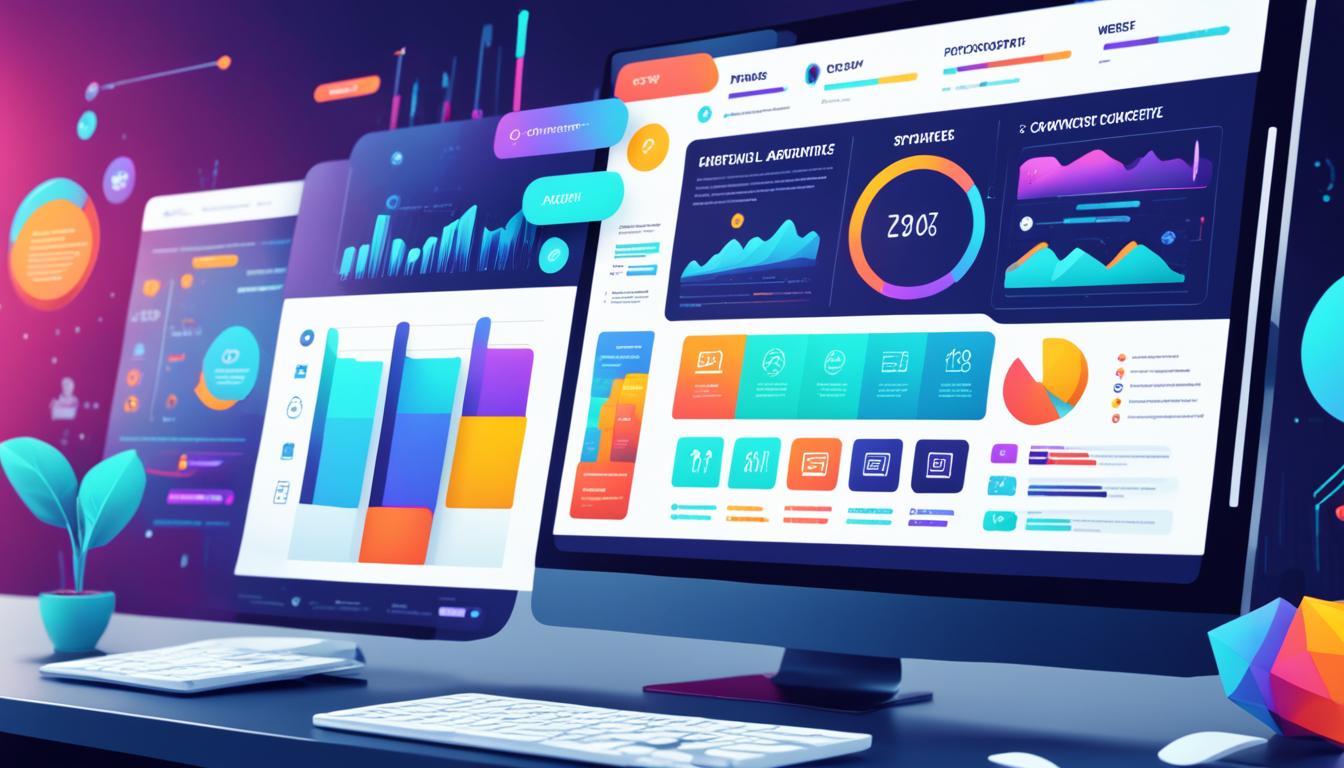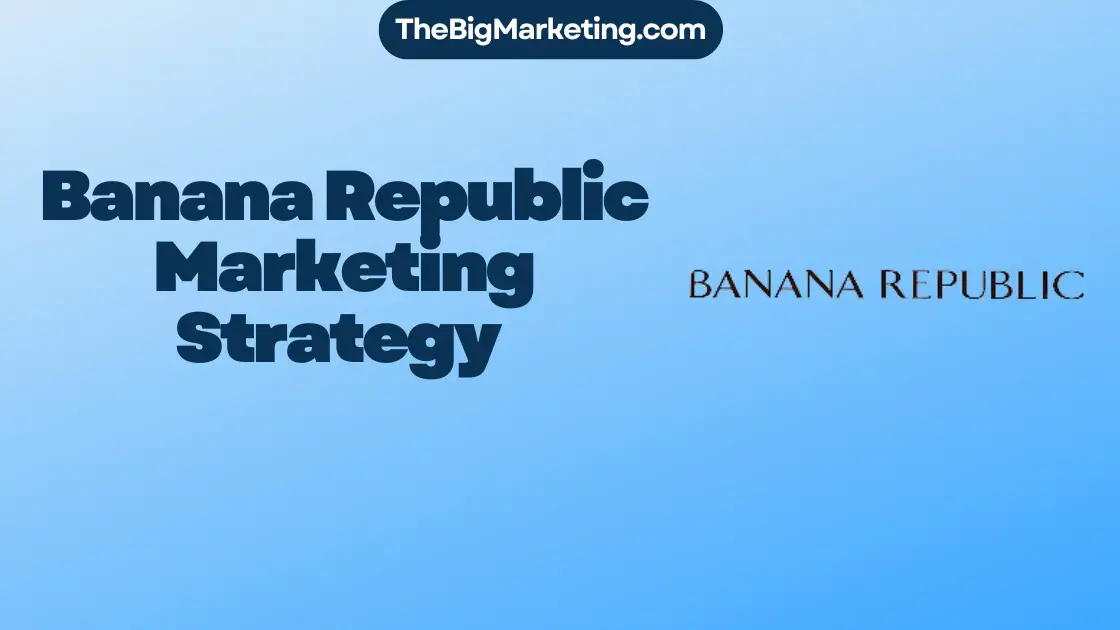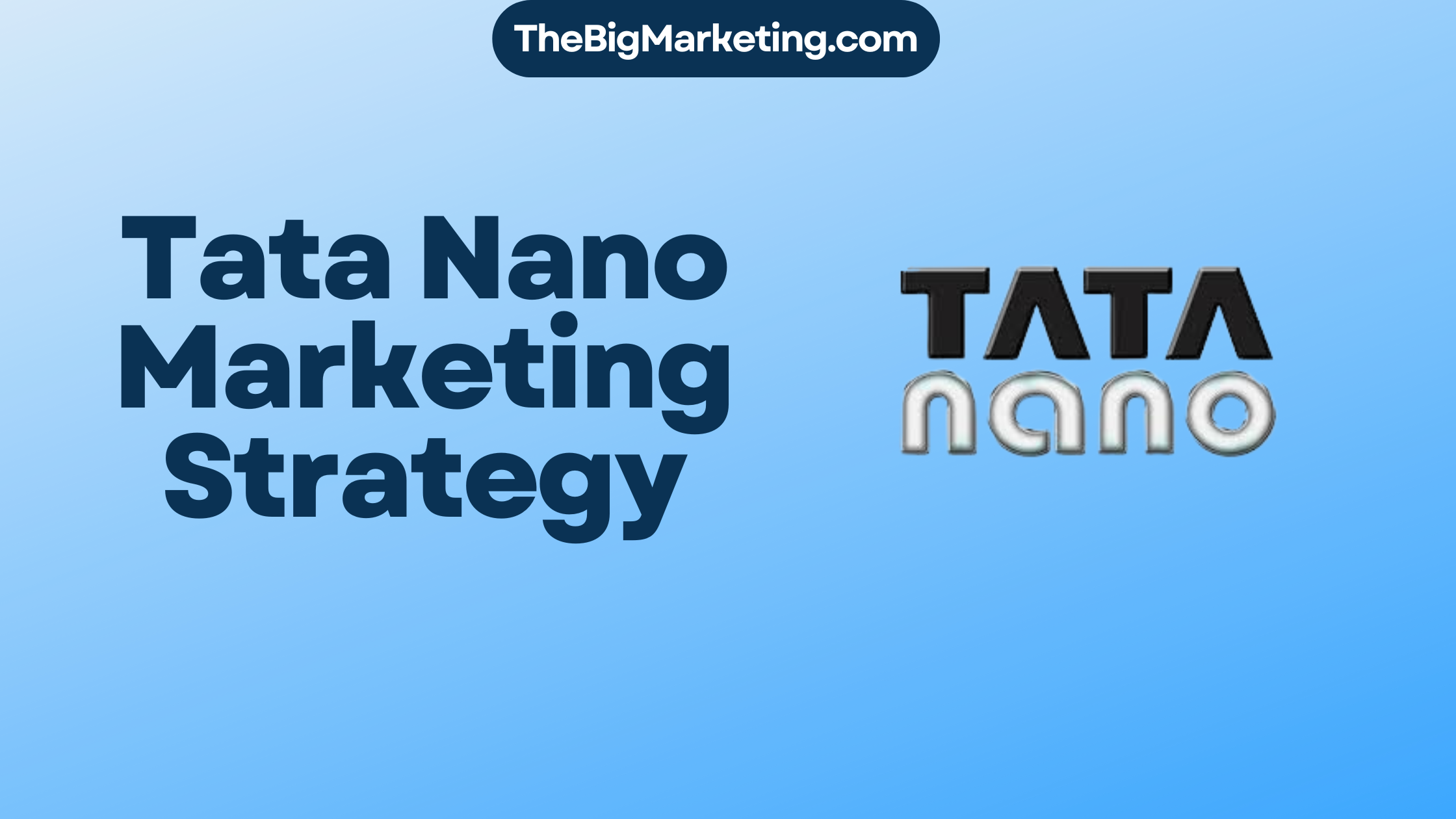With almost 3 billion monthly active users and 2 billion users logging on every day, Facebook has established itself as the top social media platform for businesses to optimize their online presence and develop a strong brand identity. In 2022, Facebook’s advertising revenue exceeded $113 billion, solidifying its profitability and importance to businesses worldwide. The platform offers a multitude of opportunities to engage with users and enhance brand recognition, making it a vital component of any digital marketing strategy.
Key Takeaways:
- Facebook Branding Strategy involves leveraging the platform’s immense user base to expand brand visibility and capture potential leads.
- Using subtitles in video posts is crucial, as 53.5% of completed Facebook videos are played without sound.
- Image ads on Facebook allow for concise messaging, with 40 characters for the headline and up to 125 characters for the main message.
- Businesses can choose from ad objectives categorized under Awareness, Consideration, and Conversion when utilizing Facebook ads.
- Facebook offers various ad formats, including Image ads, Video ads, Carousel ads, and Collection ads, to cater to different marketing goals.
- By boosting posts, businesses can strategically target their desired audience, set budgets, and determine campaign durations to increase visibility.
- Tracking and monitoring Facebook ads using tools like Ads Manager allows businesses to analyze data such as ad impressions, click-through rates, conversion rates, and cost per conversion.
As the third most visited website worldwide, Facebook holds a significant impact on users’ daily lives. Americans spend an average of 30.9 minutes on the platform each day, and 30% of U.S. adults consider Facebook as their primary source of news. Additionally, 72% of Facebook users engage in messaging friends and family, while 54.3% follow brands and products, heightening the potential for audience engagement and brand recognition.
Despite the evolving social media landscape, Facebook continues to generate a high return on investment for businesses, making it a valuable tool in their marketing arsenal. With its massive user base and streamlined ad objectives, Facebook allows brands to reach their target audience effectively. By harnessing the power of AI-powered targeting and leveraging immersive ad formats, businesses can optimize their ad campaigns and achieve impressive results, such as lower cost per purchase, conversion, and acquisition.
Moreover, Facebook Marketplace has become a widely used platform, with 55% of Americans and one in three global users utilizing its services. Harnessing the potential of this feature can help businesses expand their reach and tap into a highly engaged user base.
In conclusion, Facebook’s branding strategy in 2024 requires businesses to capitalize on the platform’s massive user base, optimize their ad campaigns, and engage with their target audience. By utilizing the right tools and strategies, businesses can enhance brand recognition, capture potential leads, and achieve their marketing goals, ultimately leading to growth and success in the digital landscape.
What is Facebook Marketing?
Facebook marketing is a strategic promotion technique utilized on the Facebook platform to enhance brand recognition, expand the online audience, and boost sales. With over 3 billion monthly active users, Facebook provides a vast potential audience, particularly among users aged 25-34, making it an essential platform for establishing a strong brand presence.
By incorporating Facebook marketing into their overall marketing strategy, businesses can increase their conversion rates by an average of 9.21%. This platform is particularly popular among U.S. social commerce buyers, with over 65% regularly using Facebook for their purchasing activities.
Facebook offers various post types, including photos, videos, carousels, and collections, allowing businesses to engage prospective customers in multiple ways. Additionally, Facebook is the top platform where most consumers intend to post and share content, surpassing Instagram and TikTok.
One of the key advantages of Facebook marketing is access to valuable analytics data. Facebook’s analytics tools provide demographic, geographic, behavioral, income, lifestyle, and interest segmentation, enabling businesses to precisely target their desired audience. These analytics also include metrics on reach, engagement, likes, video stats, and e-commerce performance, giving businesses a comprehensive suite of social media data to analyze and optimize their marketing efforts.
Another powerful feature of Facebook marketing is the use of Facebook Pixel, which allows businesses to track user interactions and conversions beyond the Facebook platform and onto their websites. This tracking capability provides businesses with crucial data to understand user behavior, optimize their marketing campaigns, and drive conversions.
To better understand their target audience, businesses can utilize Facebook’s Audience Insights tool, which provides demographics and specific interests. This information helps businesses craft more targeted campaign strategies that resonate with their audience.
Successful Facebook marketing requires implementing a consistent content strategy. By creating a content calendar and regularly updating their Facebook Page, businesses can maximize their online visibility and maintain user interest. The rule of thirds is a popular social media marketing approach where 80% of posts are educational or informative, while only 20% are self-promotional. This balance helps businesses engage their audience and build trust.
With 1.56 billion daily active users and the average global user spending almost an hour per day on Facebook, the potential reach and impact of Facebook marketing are undeniable. With over 70 million businesses worldwide marketing via Facebook Page, the number of businesses utilizing this platform has continued to grow, demonstrating the effectiveness of Facebook marketing in achieving business goals.
| Facebook Marketing Statistics | |
|---|---|
| Average Conversion Rate on Facebook | 9.21% across industries |
| Number of Monthly Active Users on Facebook | Over 3 billion |
| Percentage of U.S. Social Commerce Buyers Using Facebook | Over 65% |
| Number of Daily Active Users on Facebook | 1.56 billion |
| Number of Businesses Marketing via Facebook Page | 70 million worldwide |
How to Set Up Facebook for Business
To leverage the power of Facebook for business, businesses need to set up a Facebook Page. This provides a dedicated platform for engaging with customers, promoting products or services, and building brand awareness in the digital space.
Setting up a Facebook Page is a straightforward process that begins with creating a personal Facebook profile. Once you have a personal profile, follow these steps to set up your Facebook Page:
- Click on the Pages icon located on the left-hand side of your Facebook homepage.
- Select “Create New Page” to begin the setup process.
- Provide a unique and descriptive name for your Facebook Page. Choose a name that accurately represents your brand or business.
- Select the appropriate business category that aligns with your industry or niche.
- Fill in crucial business information such as your contact details, location, and a brief description of your products or services.
It is important to note that while creating a Facebook Page, businesses have the option to verify their Page for brand authenticity. Facebook offers a verification badge for eligible businesses that meet their requirements. This verification badge adds credibility and trust to your brand, helping to establish a reputable online presence.
In addition to setting up a Facebook Page, businesses should also create an ad account through the Business Settings on Facebook. An ad account allows businesses to create, manage, and analyze their advertising campaigns, helping them effectively reach their target audience and achieve their marketing goals.
By setting up a Facebook Page and an ad account, businesses unlock the full potential of Facebook for business. They can engage with their audience, drive traffic to their websites, convert leads into customers, and expand their brand reach to the billions of active users on Facebook.
Types of Facebook Posts for Marketing
When it comes to marketing on Facebook, businesses have a variety of post types at their disposal to engage with their target audience. These different post formats allow brands to experiment with content and maximize their reach. Here are some of the most effective types of Facebook posts for marketing:
1. Text Posts
Text posts serve as a versatile way to communicate with your audience. They can be used to share updates, ask questions, solicit recommendations, or convey important information about your brand. While text posts may have a relatively low engagement rate of 0.11%, they are still valuable for creating conversations and building brand loyalty.
2. Photo Posts
Photo posts are highly engaging and can attract the attention of your audience. These posts are ideal for showcasing your products, sharing behind-the-scenes content, or capturing lifestyle shots that resonate with your target market. It’s no wonder that photo posts have the highest engagement rate among all post types for Facebook Pages.
3. Video Posts
Video posts are a powerful storytelling tool that can grab and hold the attention of your audience. Consider creating product demos, interviews, event coverage, or even short films to captivate your viewers. While videos make up only 17.4% of all posts on Facebook Pages, they have the potential to drive high levels of engagement and generate significant interest in your brand.
4. Linked Content Posts
Linked content posts are a great way to drive traffic to your website, blog, or articles. By sharing valuable content and linking back to your website, you can establish yourself as a thought leader in your industry and attract potential customers. Make sure to provide a compelling description and a clear call-to-action to encourage users to click on the link and explore further.
5. Facebook Stories
Facebook Stories are a popular feature that allows you to share casual and ephemeral updates with your audience. These posts disappear after 24 hours, making them ideal for sharing timely content such as flash sales, limited-time offers, or behind-the-scenes footage. Take advantage of the format’s immediacy and create engaging Stories that resonate with your followers.
| Facebook Post Type | Engagement Rate |
|---|---|
| Text Posts | 0.11% |
| Photo Posts | Highest engagement rate |
| Video Posts | N/A |
| Linked Content Posts | N/A |
| Facebook Stories | N/A |
Source: Based on available statistics data
How to Start Marketing on Facebook
In order to start marketing on Facebook, the first step is to create a Facebook business page. This page will serve as the hub for your brand’s presence on the platform and allow you to connect with potential customers. Creating a Facebook business page is easy and can be done using your personal Facebook profile.
Once your Facebook business page is set up, the next step is to focus on acquiring likes. These likes are important as they increase the visibility of your page and help you reach a larger audience. To acquire likes, it is crucial to identify your target audience and tailor your content strategy to appeal to them.
54.9% of Facebook users use the platform as their primary hub for researching brands, and 66% of all Facebook users explore local business Pages at least once per week. By knowing your target audience and understanding their needs, interests, and pain points, you can create content that resonates with them and encourages engagement.
When it comes to content strategy, it is important to diversify your approach. While text posts on Facebook Pages have a modest engagement rate of 0.11%, compared to the average post engagement rate of 0.07%, photos are the most engaging type of post. Including visual content in your strategy, such as images and videos, can help capture your audience’s attention and drive higher engagement.
In fact, video posts make up only 17.4% of all posts on Facebook Pages, but the number of internet users consuming video online daily exceeds three billion. Leveraging videos can be a powerful tool to enhance your Facebook marketing efforts and connect with your target audience.
In addition to organic methods, businesses can also use paid ads to attract their target audience and acquire likes. Facebook offers a range of advertising options such as boosted posts and targeted ads that can help increase the visibility of your page and reach a wider audience.
Fundraiser posts on Facebook Pages also offer a unique opportunity for businesses to generate cash for causes while engaging with their followers. This can not only create a positive brand image but also foster a sense of community and customer loyalty.
By actively using Facebook for marketing purposes, businesses can tap into its vast user base. With over 2.4 billion users, Facebook is the largest social media platform in the world. Moreover, it is estimated that by 2025, 69 million social media shoppers will make purchases on Facebook, highlighting the potential for businesses to drive sales and revenue through the platform.
Therefore, it is essential for businesses to utilize Facebook as a marketing tool and develop effective strategies to engage with their target audience. By researching target audience demographics, interests, purchase intent, pain points, and goals, businesses can craft tailored content that resonates with their audience and drives meaningful engagement.
Collaborating with influencers can also significantly impact consumer behavior and boost engagement rates on Facebook. By leveraging the influence and reach of popular influencers, businesses can tap into their followers’ trust and loyalty, expanding their brand visibility and credibility.
In conclusion, starting marketing on Facebook requires creating a Facebook business page, acquiring likes, and developing a content strategy targeted towards your audience. By utilizing diverse content formats, researching your target audience, and collaborating with influencers, businesses can effectively engage with their audience and drive results on Facebook.
Creating a Facebook Marketing Strategy
Developing a strong Facebook marketing strategy is essential for businesses looking to maximize their online presence and reach a wider audience. By leveraging the platform’s extensive user base of 3 billion active users and diverse marketing opportunities, businesses can effectively promote their brand, engage with customers, and drive sales.
Before diving into Facebook marketing, it’s important to set clear goals that align with the overall marketing strategy and business objectives. These goals should be established quarterly to ensure a consistent and focused approach. Whether the objective is to build brand awareness, increase website traffic, boost engagement rates, generate leads, improve customer service, or drive sales, having well-defined goals will guide the entire marketing strategy.
Understanding the target audience is another essential aspect of a successful Facebook marketing strategy. Industry research and reports provide valuable data on consumer preferences, behaviors, and trends, helping businesses create content that resonates with their target audience. Conducting a content audit can also provide insights into the type of content that performs well and helps businesses identify areas for improvement.
When it comes to creating content on Facebook, businesses have various post types to choose from, including text posts, photos, videos, Facebook Live, link posts, and Facebook Stories. Recent surveys, such as the one conducted by Databox in 2021, have shown that engaging video posts on Facebook outperform static images in terms of organic engagement. As a result, businesses should prioritize video content, especially live videos, to enhance their organic reach and maximize engagement.
To streamline the content creation process, businesses should develop a content plan that outlines the frequency and topics of the posts. This plan ensures consistency and helps businesses stay organized. It is also crucial to optimize content for mobile devices since the majority of Facebook usage happens on mobile.
| Facebook Metrics | Definition |
|---|---|
| Impressions | The number of times a post or ad is displayed to users |
| Clicks | The number of times users click on a post or ad to learn more |
| Engagement | The level of interaction users have with a post or ad, such as likes, comments, and shares |
| Reach | The number of unique users who see a post or ad |
| Frequency | The average number of times users see a post or ad |
| Cost per click (CPC) | The average cost of each click on a post or ad |
In order to measure the success of the Facebook marketing strategy, businesses can utilize the metrics provided by the Meta Business Suite. This suite allows businesses to manage their Facebook and Instagram accounts from a single dashboard and provides valuable insights for measuring the effectiveness of Facebook ads. By analyzing metrics such as impressions, clicks, engagement, reach, frequency, and cost per click (CPC), businesses can optimize their ads and make data-driven decisions to ensure they are achieving their goals.
In addition to organic content and ads, businesses can also leverage the Facebook Shopping feature, also known as Facebook Shops. This e-commerce platform allows businesses to create online storefronts on Facebook and Instagram, providing a seamless shopping experience for users. Tips for setting up a successful Facebook Shop include creating visually appealing stores, leveraging product collections, optimizing for mobile, and actively engaging with customers.
In summary, creating a successful Facebook marketing strategy involves setting clear goals, understanding the target audience, conducting a content audit if necessary, choosing suitable post types, developing a content plan, and measuring success through key metrics. By leveraging the power of Facebook’s extensive user base and advertising tools, businesses can effectively promote their brand, engage with customers, and drive meaningful results.
Boosting Posts and Creating Facebook Ads
Boosting posts on Facebook is an effective way to increase the visibility of organic content and engage with your target audience. It allows businesses to promote their existing posts to current and potential customers, driving more interactions and building a positive brand image.
Boosted posts offer limited advertising objectives such as post engagement, thru plays, profile visits, link clicks, or messaging conversations. However, they have some limitations, including a lack of control over the audience and the inability to attract new customers compared to traditional advertising.
On the other hand, creating Facebook ads through Ads Manager provides businesses with more customization options and a wider range of advertising objectives. These objectives include lead generation, sales, website visits, brand awareness, engagement, video views, and messaging.
Facebook ads appear on Facebook, Instagram, and Messenger platforms, reaching a vast audience of over 2 billion users. With different formats like single images and videos, businesses can create visually appealing ads to inform potential customers about their products or services and start the purchasing process.
While boosted posts mainly target pre-existing customers to maintain engagement and brand loyalty, Facebook ads allow businesses to target specific demographics and placements on various platforms, increasing their chances of reaching new customers effectively.
However, Facebook ads can be costly and face stiff competition due to the number of companies advertising on the platform. They may not always be placed in eye-catching positions, potentially becoming an irritant to viewers. Despite these challenges, Facebook ads drive a better return on investment compared to boosted posts.
To set up boosted posts, businesses need to select a post from their Facebook page, choose the target audience, set a budget and time frame, and then boost the post to increase its visibility.
Setting up Facebook ads involves a more comprehensive process. It includes selecting a campaign goal, defining the target audience with specific demographics, choosing ad placement across various platforms, setting a budget, selecting the ad format (image, video, carousel, or collection), and monitoring the campaign’s performance through the ad manager.
The main difference between Facebook ads and boosted posts lies in their advertising format and objectives. While boosted posts focus on promoting existing content for engagement, Facebook ads use various media types to reach new customers and achieve specific marketing goals.
In conclusion, when deciding between boosting a post or creating a Facebook ad, businesses should consider their social media strategy, business goals, and objectives. Boosted posts are ideal for maximizing engagement with the existing audience and building brand loyalty, while Facebook ads offer more customization and audience targeting options to reach new customers effectively.
| Boosting Posts | Facebook Ads |
|---|---|
| Boosted posts are created from existing posts on a Facebook page. | Facebook ads can be created from scratch using Ads Manager. |
| Targeted towards current and potential customers. | Allows targeting specific demographics and placements. |
| Objective: Increase engagement with existing customers. | Objective: Reach new customers, inform, and start the purchasing process. |
| Lack control over audience targeting. | Offers extensive customization and targeting options. |
| Best for maintaining engagement and brand loyalty. | Best for reaching new customers and achieving specific business goals. |
How to Use Ads Manager and Track Analytics
Facebook Ads Manager is a powerful tool that allows businesses to effectively manage their ad campaigns and track their performance. With over 2.96 billion active monthly users, Facebook offers a massive potential reach for businesses looking to advertise their products or services.
When using Facebook Ads Manager, businesses have the ability to set specific ad objectives for their campaigns. These objectives include app promotion, awareness, engagement, leads, sales, and traffic. By selecting the appropriate objective, businesses can tailor their ads to achieve their desired outcomes.
One crucial aspect of utilizing Facebook Ads Manager is setting an ad budget. With an average cost-per-click (CPC) of $1.72, Facebook ads offer a cost-effective advertising solution compared to other platforms. By allocating an appropriate budget, businesses can effectively manage their ad spend and optimize their return on investment.
Targeting the right audience is another key component of successful Facebook advertising. With Facebook’s extensive user data, businesses have access to detailed targeting options such as gender, age, location, language, interests, demographics, and behaviors. By accurately defining their target audience, businesses can ensure that their ads are reaching the right people.
Choosing the right ad placement is also crucial for campaign success. Facebook offers various placement options, including the Facebook News Feed, Instagram, Messenger, and Audience Network. By strategically selecting ad placements, businesses can maximize their ad visibility and engagement.
Once ads are live, it’s vital to track and monitor their performance. Facebook Ads Manager provides comprehensive tracking and monitoring analytics to help businesses evaluate their campaign effectiveness. It allows businesses to analyze ad performance across demographics, delivery, performance, and platform through Meta Ads Reporting.
Within Facebook Ads Analytics, businesses can access a wide range of metrics to gain insights into their ad performance. These metrics include reach, impressions, clicks, click-through rates (CTR), average CPC, conversion rates, and cost per conversion. By analyzing these metrics, businesses can make data-driven decisions to optimize their campaigns and enhance their overall advertising performance.
For a more customized analysis, businesses can create customized reports based on chosen metrics in Meta Ads Reporting. However, it’s important to note that Meta Ads Reporting has some limitations, such as no support for multiple accounts and limited data comparison. In such cases, businesses may explore third-party tools like Looker Studio or Power BI for more in-depth analysis.
Ultimately, tracking and monitoring analytics are essential for businesses using Facebook Ads Manager. It enables businesses to measure the success of their campaigns, identify areas for improvement, and scale their advertising efforts to drive business growth over time.
| Key Metrics | Description |
|---|---|
| Reach | The number of unique individuals who saw the ad. |
| Impressions | The total number of times the ad was displayed. |
| Clicks | The number of times users clicked on the ad. |
| CTR (Click-Through Rate) | The percentage of ad impressions that resulted in clicks. |
| CPC (Cost Per Click) | The average cost paid for each click on the ad. |
| Conversion Rate | The percentage of users who completed a desired action, such as making a purchase, after clicking on the ad. |
| Cost Per Conversion | The average cost of acquiring a conversion. |
Conclusion
In today’s digital marketing landscape, a strong Facebook branding strategy is crucial for businesses aiming to enhance brand recognition, optimize online presence, and engage with their target audience. With over 3 billion monthly active users on Facebook and approximately 60 million active business pages, the platform provides an unparalleled opportunity for businesses to reach a vast global audience.
By utilizing the powerful targeting options offered by the Facebook advertising platform and implementing various ad formats, businesses can effectively connect with specific audience segments. Monitoring key metrics such as reach, engagement, and click-through rates is essential for evaluating the performance of content and campaigns, enabling businesses to make data-driven decisions and optimize their strategies.
Furthermore, Facebook Insights and other tools like Facebook Audience Network and Meta Pixel offer valuable data and analytics to understand audience behavior and preferences, allowing businesses to create buyer personas and tailor their strategies accordingly. Building a strong online presence involves optimizing Facebook Pages for SEO and conversions, utilizing a content calendar for consistency, and leveraging a balanced mix of organic and paid content.
Additionally, user-generated content can play a significant role in enhancing brand loyalty, reputation, and authenticity. By showcasing brand personality through features like Facebook Live and utilizing visual content, businesses can create memorable experiences for their audience. Lastly, engagement on Facebook should be personalized, as it leads to better customer interactions and fosters strong connections.
In conclusion, businesses that implement a well-rounded Facebook branding strategy, encompassing social media branding, online presence optimization, and digital marketing techniques, can boost brand recognition, engage their audience effectively, and stay ahead in the competitive digital landscape.







